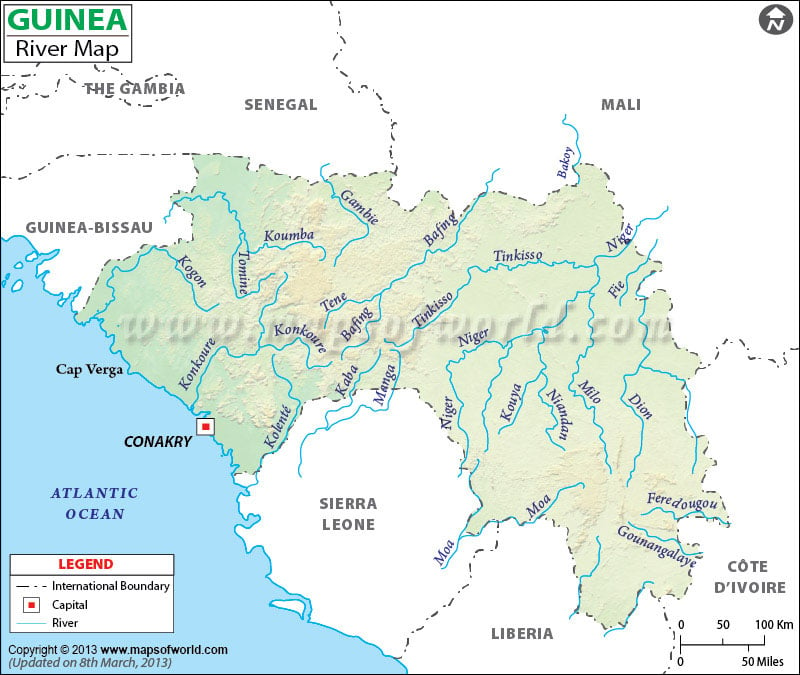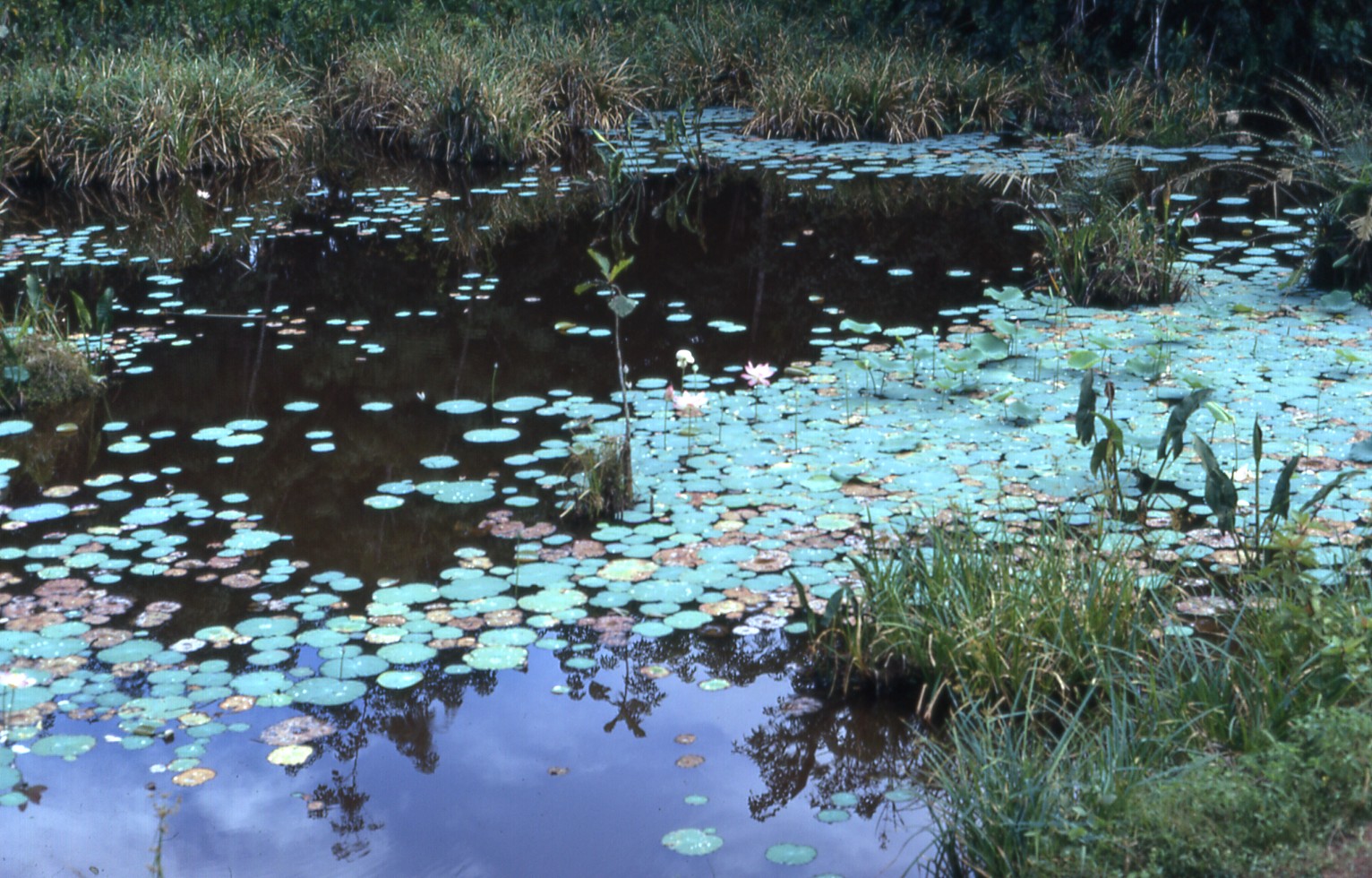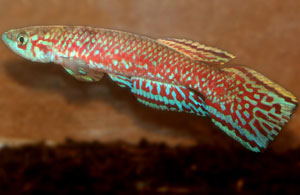Introduction
I have two main motivations for this article. Firstly, to design an accurate biotope aquarium for some rarer West African cichlids. Secondly, to design one that involves an interesting mix of smaller fishes with cichlids, and specifically including killifish. This is partly inspired by this article on the UK Aquatic Plants Society forum, which describes a similar idea for fish from cameroon. Killifish are beautiful fish, with much more personality than other smaller fish, such as rather gormless tetras, and are often overlooked by aquarists.
The Natural Habitat
The Kolenté River (also known as the Great Scarcies River) is a river in Guinea and Sierra Leone. The river forms a portion of the international border between the two countries. It is known as Kolenté River in Guinea and as the Great Scarcies River in Sierra Leone.
I can't find any good descriptions or photos of habitats in the Kolente region. However the nearby Foto River (near the town of Fria, north of Conakry, on the Konkoure River system), collection site of Enigmatochromis lucanusi is described as:
“The type locality river was 3–6 meters wide, and during the
dry season only 30–90 cm deep with water visibility ~1.2 m. Water parameters
measured during the dry season in February, 2006 were: General hardness 0,
Carbonate hardness 0, pH 5.8, and temperature 24° C. This site was ringed by
dense forest and often fallen trees obstructing access to the water in many
places. Margins of the river were densely overgrown by Anubias lanceolata, and exposed boulders and fallen trees have
large clusters of Bolbitis heudelotti
and other ferns. The river substrate consisted of fine gravel with a few larger
rocks and boulders. Dense growths of Vallisneria
were found where sunlight penetrated through the trees” (Lamboj, 2009)
The most recent revision of Anubias (http://edepot.wur.nl/165228) shows that A. lanceolata is a synonym of A. barteri var. angustifolia, a reasonably common aquarium plant, and also lists A. afzelli, A gigantea and A. gracilis. Anubias are great plants (e..g. http://anubias-engl.blogspot.co.uk/, and A. gracilis specifically quite spectacular:
There are a few good pictures online of West African pools and slow-flowing rainforest stream habitats that I'm looking to replicate and would seem broadly consistent with the habitat described above:
http://www.aka.org/wak/Ref_Library/Scriptaphyosemion/S.geryi.htm
Inhabitants
Fishbase provides a full list of species from the Kolente River Basin (also see here).
Hemichromis sp. Guinea 1 (AKA 'Kolente Forest Jewel') is a spectacular, unusual jewel cichlids that is seen as less thuggish than many of the jewels. It is a bit less red than many, but makes up for this with its unusual pattern of irridescent blue lines on the face and unusual deeper bodied appearance. It grows to at least 5" and is endemic to the Kolente Basin.
An unusual and attractive large 'krib', Pelvicachromis rubrolabiatus, is also endemic to the Kolente. Males and females look very different. but males have unusual red lips and an attractive reddish barred body. The other three species in the same genus from the area: Pelvicachromis signatus, P. humilis and P. roloffi are less attractive than rubrolabiatus and would have similar behavior.
Hemichromis bimaculatus, a true red jewel could be great, but is rather common and may not enough space alongside other cichlids. Particularly if the other Hemichromis don’t ‘dazzle’. I think it may be H. guttatus that is actually found in Guinea andthat H. cristatus in the hobb is the same fish, but the systematics of Hemichromis are famously messy, so it is likely to v. tricky to be confident you have the right species here.
Finally, Enigmatochromis lucanusi has recently been available in the UK, and is an attractive and rare ‘far West’ African cichlid. It is not from Kolente, but from nearby in Guinea.
Scriptaphyosemion geryi is a very colourful killie. It also has the benefit of not being too rare, so I wouldn't need to feel too bad if I don’t breed them. Would add a great punch of colour and a ‘surprise’ element for the viewer as they swim in and out of cover.
Scriptaphyosemion guignardi, Scriptaphyosemion roloffi and S. cauveti Kindia, would all be good alternatves to S. geryi, but I think are harder to find and don’t quite have the same visual impact as geryi.
Callopanchax occidentalis (it may actually be a different species in the Kolente, e.g. C. toddi, C. sidibei), is a larger aphyosemion-type killie and with its gold base colour with red and blue highlights would contrast well with the more solidly colourful S. geryi.
Finally, the common lampeye, Aplocheilichthys normani, is found in the area. This is an unusual shoaling killie species and could look great in a large group (~20) in a shady aquarium. The key challenge with this species is the risk that they are consumed by the cichlids or other larger fish.
There are not many shoaling mid-water options from Kolente, beyond a few rather drab barbs and massive freshwater 'sharks'.
There are a few African tetras, including Brycinus longipinnis, which is quite chunky and has nice finnage. Rhabdalestes septentrionalis and Neolebias unifasciatus are smaller alternativels, but are not as attractive as Brycinus.The unusual darter tetra,
Keeping less cleanly to a biotope; Microsynodontis polli, is an attractive catfish that is found elsewhere in Guinea but I can't find any evidence of it from the Kolente and Pantodon buchholzi is a fascinating fish that I would like to keep but is not found as far West in Africa as the Kolente River.
Aquarium set-up and aquascaping
This famous aquascape by Nanne de Vos is close to the effect I'd be looking to create. In particular, I really like the look of the overgrown Anubias with their roots growing over the rocks and bogwood.

I'd also really like to try growing water lillies in the aquarium, and perhaps the most commonly available tropica lilly (Nymphaea lotus) is native to West Africa. An attractive aquascape could transition from a rockier area on one side, representing the margins of a pond or slow stream, covered with Anubias and Bolbitis, to an area representing more open water with Nymphaea and Vallisneria.Assuming a 4 to 5 foot tank, I would aim for the following stocking list:
2 x Hemichromis sp. 'Guinea 1'
2 x Pelvicachromis rubrolabiatus
2 x Anomalochromis thomasi
7 x Brycinus longipinnis
8 x Scriptaphyosemion cauveti
4 x Callopanchax occidentalis
1 x Synodontis waterloti
These species are pictured below:
















